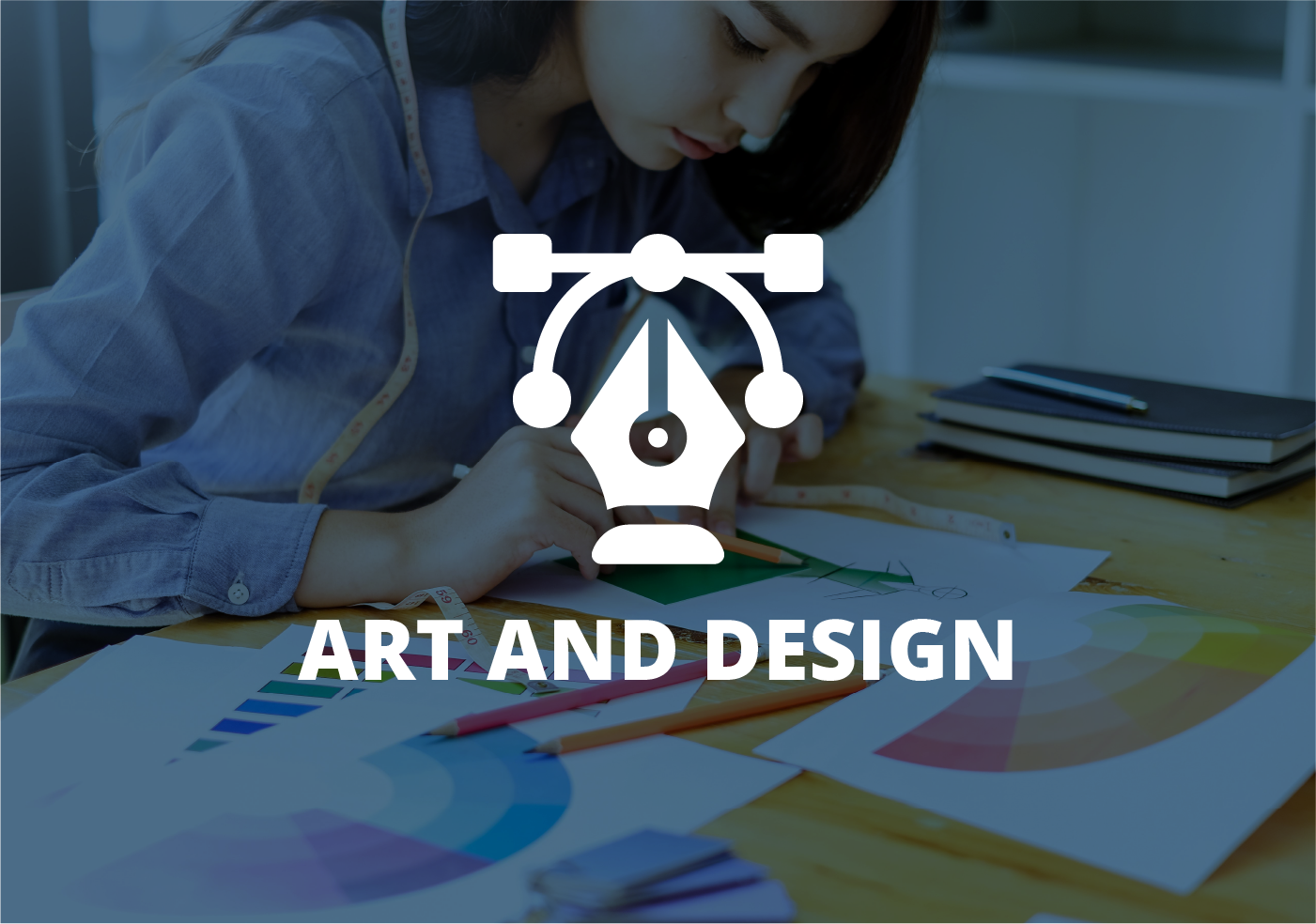BTEC INTERNATIONAL @DPU
Business and Technology Education Causal
LEVEL 3
Upon successful completion of the BTEC International Level 2 Extended Certificate in Art & Design, individuals become entitled to enroll in and undertake level 3 studies within relevant disciplines.
WHAT WILL THESE QUALIFICATIONS LEAD TO ?
Learners who successfully complete the Extended Diploma of BTEC International Level 3 have the opportunity to pursue a bachelor's degree at colleges and universities both in Thailand and abroad. The following examples show several qualification.
Learners who have successfully completed an Extended Diploma in Art and Design, as well as Creative Media, have the chance to further their education by pursuing BTEC International Level 4, which corresponds to higher national certificates (HNC), and BTEC International Level 5, which corresponds to higher national diplomas (HND).Higher education institutions in the United Kingdom provide a diverse array of academic disciplines, encompassing contemporary art practice, fashion and textiles, fine art, graphic design, interior design, photography, the film industry and television, visual effects, and web design.
Learners who have successfully completed an Extended Diploma in Business have the opportunity to advance to higher-level programs such as the BTEC International Level 4 higher national certificate and the BTEC International Level 5 higher national diploma. In the United Kingdom, institutions of higher education, namely colleges and universities, provide a wide range of academic disciplines encompassing business studies, marketing, human resource management, travel and tourism, as well as hospitality
WHAT WILL THESE QUALIFICATIONS LEAD TO ?
Learners who successfully complete the Extended Diploma of BTEC International Level 3 have the opportunity to pursue a bachelor's degree at colleges and universities both in Thailand and abroad. The following examples show several qualification.
Learners who have successfully completed an Extended Diploma in Art and Design, as well as Creative Media, have the chance to further their education by pursuing BTEC International Level 4, which corresponds to higher national certificates (HNC), and BTEC International Level 5, which corresponds to higher national diplomas (HND).Higher education institutions in the United Kingdom provide a diverse array of academic disciplines, encompassing contemporary art practice, fashion and textiles, fine art, graphic design, interior design, photography, the film industry and television, visual effects, and web design.
Learners who have successfully completed an Extended Diploma in Business have the opportunity to advance to higher-level programs such as the BTEC International Level 4 higher national certificate and the BTEC International Level 5 higher national diploma. In the United Kingdom, institutions of higher education, namely colleges and universities, provide a wide range of academic disciplines encompassing business studies, marketing, human resource management, travel and tourism, as well as hospitality

ENTRY REQUIREMENTS
Applicants to BTEC International Level 3 are expected to possess a minimum set of qualifications.
- The achievement from the BTEC level 2.
- Applicants from the Thai school system who have completed Mattayom 5.
- International General Certificate of Secondary Education (IGCSE).
- An English language competence score equivalent to an International English Language Testing System (IELTS) score of 5.0 or above.
Art and Design
What will I study?
The Extended Diploma of BTEC International Level 3 in art and design consists of a total of 1080 Guided Learning Hours (GLH), which are further divided into two distinct modules.
*GLH = guided learning hour
Learners have the opportunity to explore different practices in art and design, including the privilege of studying under the guidance of industry specialists. Module A covers a diverse array of subjects within the field of fashion design, involving technical drawing, pattern making, moulage technique, styling and presentation, conceptual fashion design, and experimental materials. The topics covered in Module B of fashion design include several aspects of creative practice, such as market insight, identity and branding, visual merchandising, collection design, 3D design, and sustainable design.
Module A encompasses various aspects of graphic design, including creative thinking, graphic illustration, character design, creative advertising, research in graphic design, and the social context within which designers operate. Module B encompasses several topics related to graphic design, such as experimental material for graphic design, design thinking implementation, digital media design, augmented reality (AR) and virtual reality (VR), fundamental animation techniques, and circular economy design.
| Learning and teaching module | Related assessment units | GLH |
|---|---|---|
| A. Exploring and Developing Art and Design Skills | A1. Skills Development | 270 |
| A2. Responding to a Brief | 90 | |
| A3. Creative Project | 180 | |
| B. Advancing Creative Practice | B1. Personal Progression | 90 |
| B2. Personal Investigation | 90 | |
| B4. Extended Creative Industry Response | 360 |
Learners have the opportunity to explore different practices in art and design, including the privilege of studying under the guidance of industry specialists. Module A covers a diverse array of subjects within the field of fashion design, involving technical drawing, pattern making, moulage technique, styling and presentation, conceptual fashion design, and experimental materials. The topics covered in Module B of fashion design include several aspects of creative practice, such as market insight, identity and branding, visual merchandising, collection design, 3D design, and sustainable design.
Module A encompasses various aspects of graphic design, including creative thinking, graphic illustration, character design, creative advertising, research in graphic design, and the social context within which designers operate. Module B encompasses several topics related to graphic design, such as experimental material for graphic design, design thinking implementation, digital media design, augmented reality (AR) and virtual reality (VR), fundamental animation techniques, and circular economy design.
How will I be taught?
Learners will actively participate in educational activities facilitated by instructors, covering both theoretical and hands-on components. The development of essential abilities in art and design will be guided using a range of instructional methods, including in-class lectures, workshops, seminars, demonstrations, as well as both mini and extended projects.
Learners will be provided with inspirational themes, technical information regarding outcomes, and client background information as starting points for their artworks or projects. It is important to have the balanced skills to facilitate learner progression. The skill set encompassed by art and design is diverse, encompassing several areas like as textile manipulation, fashion promotion and accessory design, traditional painting and sketching techniques, as well as proficiency in using advanced technologies like 3D printing, among others.
Learners will be provided with inspirational themes, technical information regarding outcomes, and client background information as starting points for their artworks or projects. It is important to have the balanced skills to facilitate learner progression. The skill set encompassed by art and design is diverse, encompassing several areas like as textile manipulation, fashion promotion and accessory design, traditional painting and sketching techniques, as well as proficiency in using advanced technologies like 3D printing, among others.
How will I be assessed?
The evaluation of learning ability in art and design involves five assessment criteria, including informing ideas, problem solving, technical skills, professional practise, and communication. In order to demonstrate proficiency, learners must consistently utilise the aforementioned five abilities in the process of producing an artefact, project, or work.
Various forms of evidence can include project proposals and reports, feedback received from peers, online exhibitions, as well as participation in public events. Teachers have the ability to collaborate with clients or employers in order to develop assignment briefs that are grounded in authentic, real-world scenarios. Subsequently, the learners generate a comprehensive report and deliver a presentation to the clients, showcasing the proposed solutions.
Various forms of evidence can include project proposals and reports, feedback received from peers, online exhibitions, as well as participation in public events. Teachers have the ability to collaborate with clients or employers in order to develop assignment briefs that are grounded in authentic, real-world scenarios. Subsequently, the learners generate a comprehensive report and deliver a presentation to the clients, showcasing the proposed solutions.
What’s next?
Learners have the opportunity to advance along the educational path by going for Higher Education or enrolling in a university programme. An alternative career path could involve pursuing professional opportunities within the area of the creative arts business.

Business
What will I study?
The Extended Diploma of BTEC International Level 3 in Business comprises 1080 GLH. The curriculum consists of mandatory and optional units: 7 mandatory units of 540 GLH and 8 optional units of 540 GLH.
Mandatory units for business cover various areas in business, including marketing research and planning, finance, management, and business decision-making. The optional units include several business-related operations, such as international business, customer service, human resources, financial transactions and statements, retail business, branding, promotion, logistics, health and safety, sustainability, and business ethics.
Mandatory units for business cover various areas in business, including marketing research and planning, finance, management, and business decision-making. The optional units include several business-related operations, such as international business, customer service, human resources, financial transactions and statements, retail business, branding, promotion, logistics, health and safety, sustainability, and business ethics.
How will I be taught?
Learning aims and key content areas are strategically developed to facilitate learners in acquiring insights, information, and a comprehensive understanding of the related subjects. Learners will be taught on the process of information retrieval, analysis, and application within the context of business operations, utilising a range of tools and technologies.
Academia and experts will be invited from the industry to share their knowledge and experience in class or workshop. International experts will be invited to share their thought and knowledge via online classroom or zoom meeting.
Academic professionals and industry specialists will be extended invitations to share their knowledge and expertise through classroom lectures or workshop sessions. Leading international scholars will be invited to contribute their insights and expertise through the use of an online educational platform or virtual conferencing tool such as Zoom.
Academia and experts will be invited from the industry to share their knowledge and experience in class or workshop. International experts will be invited to share their thought and knowledge via online classroom or zoom meeting.
Academic professionals and industry specialists will be extended invitations to share their knowledge and expertise through classroom lectures or workshop sessions. Leading international scholars will be invited to contribute their insights and expertise through the use of an online educational platform or virtual conferencing tool such as Zoom.
How will I be assessed?
Learners will undergo assessment via various methodologies. The application of practical tasks, whether through in-class work or take-home work, can effectively address the unit objectives for individual learners. Written types and project-based tasks are applied in several units. Some units require learners to demonstrate their ability to demonstrate various skills, such as analytical and critical thinking skills, technical skills, and using related technology.
What’s next?
Learners have the opportunity to advance along the educational path by going for Higher Education or enrolling in a university programme. An alternative career path could involve pursuing professional opportunities within the area of the creative arts business.

Creative Media
What will I study?
The Extended Diploma of BTEC International Level 3 in Creative Media is composed of a total of 1080 guided learning hours (GLH), which are further divided into two distinct modules.
*GLH = guided learning hour
Module A offers a comprehensive range of subjects for learners to explore, including art appreciation, screenwriting, visual design and graphics, storytelling and message design, broadcasting and streaming, digital content creation, design thinking, and marketing for media firms. Module B encompasses a range of topics related to the realm of advanced film production, event exhibition media, innovation and technology within the media and entertainment industry, media production management, and entertainment business management.
| Learning and teaching module | Related assessment units | GLH |
|---|---|---|
| A. Exploring and Developing Art and Design Skills |
A1. Skills Development
A2. Responding to a Brief
A3. Creative Project
|
270
90
180
|
| B. Advancing Creative Practice |
B1. Personal Progression
B2. Personal Investigation
B4. Extended Creative Industry Response
|
90
90
360
|
Module A offers a comprehensive range of subjects for learners to explore, including art appreciation, screenwriting, visual design and graphics, storytelling and message design, broadcasting and streaming, digital content creation, design thinking, and marketing for media firms. Module B encompasses a range of topics related to the realm of advanced film production, event exhibition media, innovation and technology within the media and entertainment industry, media production management, and entertainment business management.
How will I be taught?
Learners will have the opportunity to engage in educational activities under the guidance of distinguished scholars and seasoned professionals who possess extensive expertise in the world of creative media and its associated disciplines. Distinguished representatives from prominent companies within the industry will be extended invitations to share their expertise, outstanding methodologies, and practical experiences. Additional forms of pedagogy and knowledge acquisition encompass workshops, which provide hands-on instruction in the utilization of technological instruments, as well as the art of conducting client interviews. Furthermore, lectures, discussions, and demonstrations are also employed as educational methods.
How will I be assessed?
The evaluation of learners will be conducted based on five distinct assessment criteria: informing ideas, problem solving, technical skills, professional practice, and communication. Learners are required to demonstrate proficiency in information acquisition, concept generation and selection, as well as client or audience engagement, in order to obtain a project brief or address challenges. Using tools to produce creative media work or executing a project in a professional manner are included in the overall assessment. The crucial aspect lies in the proficiency to effectively engage in communication with clients, the audience, and the community.
Various forms of evidence can include project proposals and reports, feedback received from peers, online exhibitions, as well as participation in public events. Teachers have the ability to collaborate with clients or employers in order to develop assignment briefs that are grounded in authentic, real-world scenarios. Subsequently, the learners generate a comprehensive report and deliver a presentation to the clients, showcasing the proposed solutions.
Various forms of evidence can include project proposals and reports, feedback received from peers, online exhibitions, as well as participation in public events. Teachers have the ability to collaborate with clients or employers in order to develop assignment briefs that are grounded in authentic, real-world scenarios. Subsequently, the learners generate a comprehensive report and deliver a presentation to the clients, showcasing the proposed solutions.
What’s next?
Learners have the opportunity to advance along the educational path by going for Higher Education or enrolling in a university programme. An alternative career path could involve pursuing professional opportunities within the area of the creative arts business.






